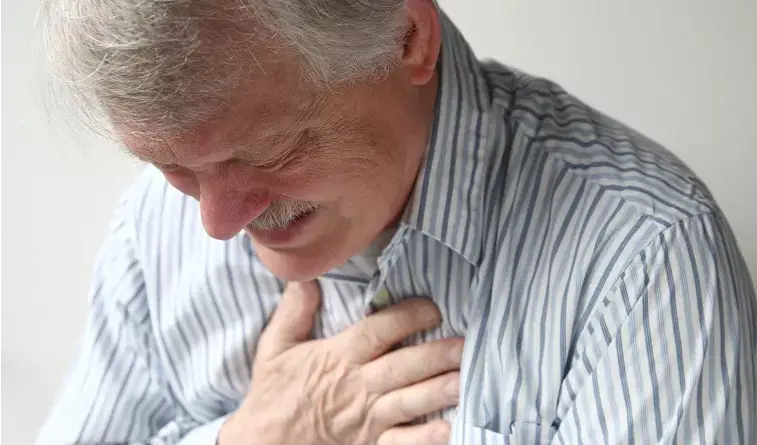What is Atypical Chest Pain? All You Need To Know
What is atypical chest pain? Generally, there is no exact meaning of atypical chest pain as its definition varies from doctor to doctor. Atypical chest pain is the term used to signify a condition when one doesn’t suffer from the typical symptoms of angina. Cardiac and non-cardiac problems are usually associated with such atypical symptoms. Stable angina is a medical terminology that refers to the feeling of strain or squeezing pain which is normally experienced after exertion. Coronary artery disease is a heart condition marked by a decreased delivery of oxygenated blood to the heart and its most common symptom is angina.
One is said to experience the symptoms of atypical chest pain if the pain he/she experiences does not have the characteristics of classic angina. Atypical chest pain may be experienced above the sternum and can also radiate to other areas contrary to typical chest pain that is caused by physical exertion and is experienced under the breastbone. Sometimes, the pain might be felt in the arms, back, throat, stomach, and shoulders. Atypical chest pain is supposed to be short-lived but sometimes the pain may be persistent, leading to the severe medical condition. An atypical heart attack may result from persistent pain in the jaw, neck or upper back. Those who tolerate pain well may not suffer a lot from atypical chest pain as compared to those who do not. Moreover, men are most likely to suffer from atypical chest pain than women.
Contents
Symptoms of Atypical chest pain
The symptoms of atypical chest pain are similar to those of musculoskeletal, respiratory or gastrointestinal disorders. They include swearing, fatigue, breathing problems, and lightheadedness.

Causes of Atypical chest pain
Many people think that atypical chest pain is only caused by heart attack or severe heart condition like coronary artery disease. However, atypical chest pain is also caused by non-cardiac problems, such as musculoskeletal or psychogenic difficulties, as highlighted below:
Costochondritis
This is one of the major causes of chest pain. The main symptoms of costochondritis include painful breathing and chest pain. This condition is related to swelling of the costal cartilages which connect the ribs’ ends to the sternum. The swelling may be due to recurring strain injuries, upper respiratory infections or blunt chest trauma. Moreover, intercostals strains are very common in people who take part in games which entails swinging of arms.
Stress
Stress is one of the major causes of various health problems and can cause chest pain. During a panic attack, one may experience symptoms such as profuse sweating, dizziness or strain in the chest. During stages of heightened anxiety, one experience tightening of the chest or pain as the chest wall’s muscles contract.
Acid Reflux Disease
This is a health condition which occurs when the stomach acid or else gastric content back-flow from the abdomen to the throat. The deteriorating sphincter muscle of the esophagus normally causes the gastric contents back-flow. Once the gastric contents are pressed towards the esophagus, they cause a burning feeling in the chest. Medically, this burning feeling in the chest is known as heartburn. Eating acidic foods, drinking caffeinated drinks and alcohol increases the risks of developing acid reflux disease. Swelling of the esophagus, as well as esophageal spasms, may as well lead to discomfort.
Lung condition
Lung conditions such as pneumothorax, pulmonary embolism, pneumonia, bronchitis, and pleurisy can also cause atypical chest pain. This is because such respiratory conditions often cause severe coughing that in turn may strain the chest wall’s muscles.
Read: 9 Killing Chest Muscle Pain Causes
Treatment of Atypical chest pain
A thorough medical check-up should be performed so as to find out the primary origin of chest pain if an individual has been experiencing repetitive occurrences of chest pain. To find out whether the chest pain is atypical and typical, the duration, intensity as well as other attributes of the pain in the chest should be examined. This is because the treatment for atypical chest pain depends on the causal condition. For costochondritis, painkillers and anti-inflammatory medicines may be prescribed while for heartburn, antacids may be prescribed. Pain attacks may be relieved by the use of relaxing techniques and drug therapy. Drug therapy may be used to treat blocked arteries, coronary artery disease, heart valve, aortic dissection or pericarditis disorders. In serious cases, surgery can be recommended.
Prevention of atypical chest pain
Though it’s hard to prevent atypical chest pain absolutely, following a balanced diet and regular exercises as well as avoiding smoking and drinking can help reduce the risks involved. Moreover, it is important to monitor your weight and regulate your blood pressure.
What is Atypical Chest Pain? All You Need To Know, Last Updated: 9/3/2018


